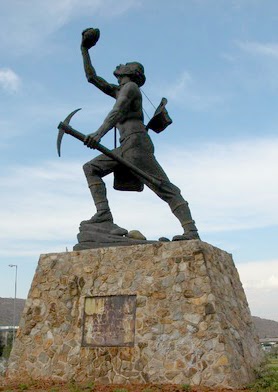Jewellery and gem stones are often objects of dispute and the ownership decided in court, here is a small selection.
 |
| The Koh-i-noor diamond currently on display at the Tower Of London |
 |
| Actress Linda Christian and husband Tyrone Power |
 |
| A pensive Princess Diana wearing a Tiara |
 |
| Some of Imelda Marcos's baubles |
Philippine investigators estimated their wealth over £6.2 billion.
The next president, Corazon Aquino, set up a special commission to recover these funds for the treasury - but now, more than 25 years later, just over £2.5 billion has been accounted for. Imelda's jewellery had been languishing in a bank vault for decades after being seized. The Sandiganbayan, the Philipine court, in January this year forfeited in favour of the Philippine government the Malacanâng collection of former First Lady Imelda Marcos. In its ruling, the court said this collection is also part of the ill-gotten wealth of the late deposed President Ferdinand Marcos and his family. However, the Marcos's are now disputing the ruling, The heirs asked the court that they be given ample opportunity to prove that the jewellery may have been lawfully acquired through other means or acquired prior to the late dictator’s tenure, so the fight continues...
See some of the collection here
Heard of the Bahia Emerald? A 3ft tall, 840lb rock embedded with 9 large emerald crystals ranging in size from 220mm, 140mm, 130mm, 110mm down to 37mm - weighing 180,000 carats in total. It was discovered at the Bahia mine in Brazil back in 2001. Valued at nearly £250 million it has had a remarkable journey, transported to the USA, hidden in an abandoned petrol station, stolen, recovered, submerged in a vault during hurricane Katrina, used as collateral in a diamond deal and at one point even put up on Ebay with a buy now price of £45 million – bargain!.
Legal possession of the Bahia Emerald has changed hands several times, according to some reports, the Bahia Emerald was even involved in a $197 million banking transaction with the notorious Bernard Madoff before he was arrested for committing the largest financial fraud in U.S. history.
At one time eight individuals laid claim to the Bahia Emerald, now just two claimants remain awaiting yet another judgement.The National Geographic Channel have made a documentary about it and there is also a book available. Read more here
Aurora Pyramid of Hope
 |
| The disputed Bahia Emerald |
Heard of the Bahia Emerald? A 3ft tall, 840lb rock embedded with 9 large emerald crystals ranging in size from 220mm, 140mm, 130mm, 110mm down to 37mm - weighing 180,000 carats in total. It was discovered at the Bahia mine in Brazil back in 2001. Valued at nearly £250 million it has had a remarkable journey, transported to the USA, hidden in an abandoned petrol station, stolen, recovered, submerged in a vault during hurricane Katrina, used as collateral in a diamond deal and at one point even put up on Ebay with a buy now price of £45 million – bargain!.
Legal possession of the Bahia Emerald has changed hands several times, according to some reports, the Bahia Emerald was even involved in a $197 million banking transaction with the notorious Bernard Madoff before he was arrested for committing the largest financial fraud in U.S. history.
At one time eight individuals laid claim to the Bahia Emerald, now just two claimants remain awaiting yet another judgement.The National Geographic Channel have made a documentary about it and there is also a book available. Read more here
 |
| The Aurora Pyramid of Hope - can be seen at the Natural History Museum |
Aurora Pyramid of Hope
On permanent loan in “The Vault” at London's Natural History Museum is the Aurora Pyramid of Hope. A display of 295 differently coloured diamonds, 267 carats in total. Only 1 in 10,000 gem-quality diamonds is coloured. The collection was put together over a period of 25 years by two New Yorkers - Alan Bronstein and Harry Rodman. Named after the Aurora Borealis for the colours and Aurora the Roman goddess of the dawn to symbolise a new beginning and to protect our natural heritage for the future. After the death of Mr Rodman aged 99, it became the subject of court battle between the 2 families. In 2001, at 92, married Mr. Bronstein’s 81-year-old mother, Jeanette, his longtime friend and neighbour, it was she who introduced Harry to her son Alan, and then further complicated by the fact that Mr. Rodman made seven wills in the last decade of his life. In their lawsuit, several of Mr. Rodman’s heirs — a grandniece and four grandnephews — argue that the Bronsteins took advantage of an elderly man and duped him into signing away his interest in Aurora Gems for $10,000. They tried to prove that Jeanette Bronstein had married Harry Rodman for his money. A lawyer who drew up Mr. Rodman’s wills testified on Mr. Bronstein’s behalf stating that “Harry described him as a friend and the son he never had", the judge ruled in favour of Alan Bronstein. The Rodman heirs plan to appeal the decision.




































